Robert Spellman immerses himself in Sri Lanka’s Jetwing hotel experience.
Sri Lankan cordiality is world famous, but I had to visit the island to really understand it. Never have I met so many people from one place with such a gift for friendliness – who share such a cool, easygoing manner. And I speak as someone who winces at dreaded “the people are so friendly” uttered as a tip for this or that destination.
Strangers meet with hands formed in prayer, give a slight bow, and say “Ayubowan” if they are Sinhalese, or “Vanakkam” if Tamil. Both words bestow respect and wishes for a long life, with the latter also acknowledging the divine in the other. Rather beautiful, I think. Respect for others is hardcoded into Sri Lankan culture, and makes for an atmosphere of deep civility wherever you travel on the island.
This talent finds a natural home in hospitality, and as a relative newbie to this region my eyes were opened to the restorative powers of a holiday here. I sampled a variety of upscale hotels and resorts – elegant places of striking design, built to keep you cool in the humid South Asian climate – and retain cherished images from each.
Trincomalee
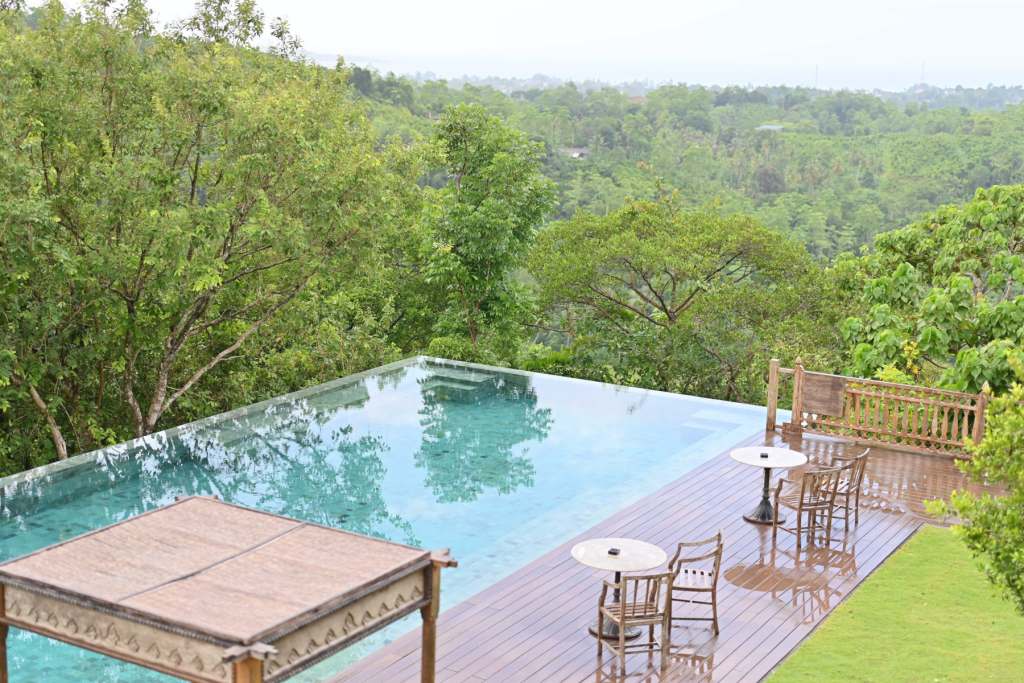
At Trincomalee on the east coast, the French windows of my bedroom at the Trinco Blu hotel opening straight onto a white-sand beach and the sprawling, buzzy, dining area at night; the ventilated, Moorish layout of Club Palm Bay in Chillaw, further south on the western edge, and the grandly luxurious Malabar Hill in Weligama, right at the bottom of the island, with its impressive roof-top bar and restaurant that hovers above a sea of tree tops (in a moment of heartbreak, I had to abandon an entire fresh crab here due to a miscalculation on my part).
These hotels, often blending Hindu, Buddhist, Islamic and even Scandinavian design, did not evolve in a vacuum. Central to the story of Sri Lanka’s post-World War Two hotel culture is a visionary figure and the hospitality empire that he built – the late Herbert Cooray and the Jetwing hotel group. Cooray had been an active Trotskyist at university, was well travelled, and by the mid-60s had founded a building firm.
Herbert Cooray
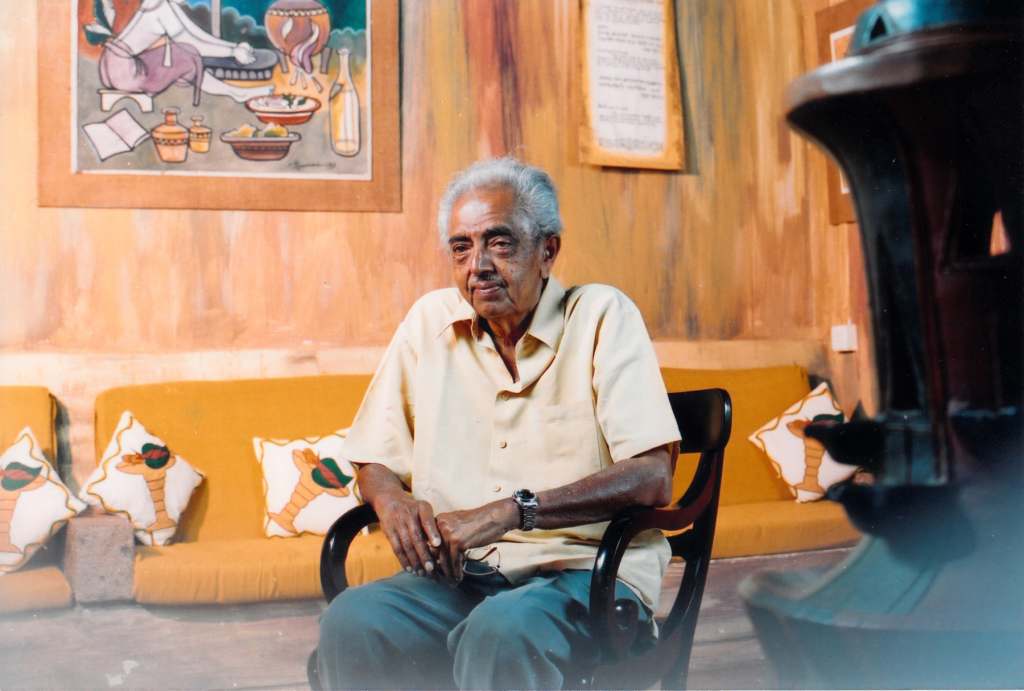
Not being an architect, he didn’t invent the “tropical modernism” of so much native hotel design – that would be venerated architect Geoffrey Bawa – but on catching the hospitality bug in the early 70s and founding Jetwing, Cooray reimagined and enlarged its scope like no other. Chic hotels that employ local people, with everyone, from guests to staff, treated with utmost respect and kindness; sustainably run, and connected to the spirit of their location.
The company prides itself on never having made an employee redundant, even during the darkest periods of Sri Lanka’s civil war when tourism was at an all time low, or the tsunami of 2004. To quote Mr Cooray: “It is our people who go out and get business. They are our greatest asset.”
Jetwing Lagoon Negombo
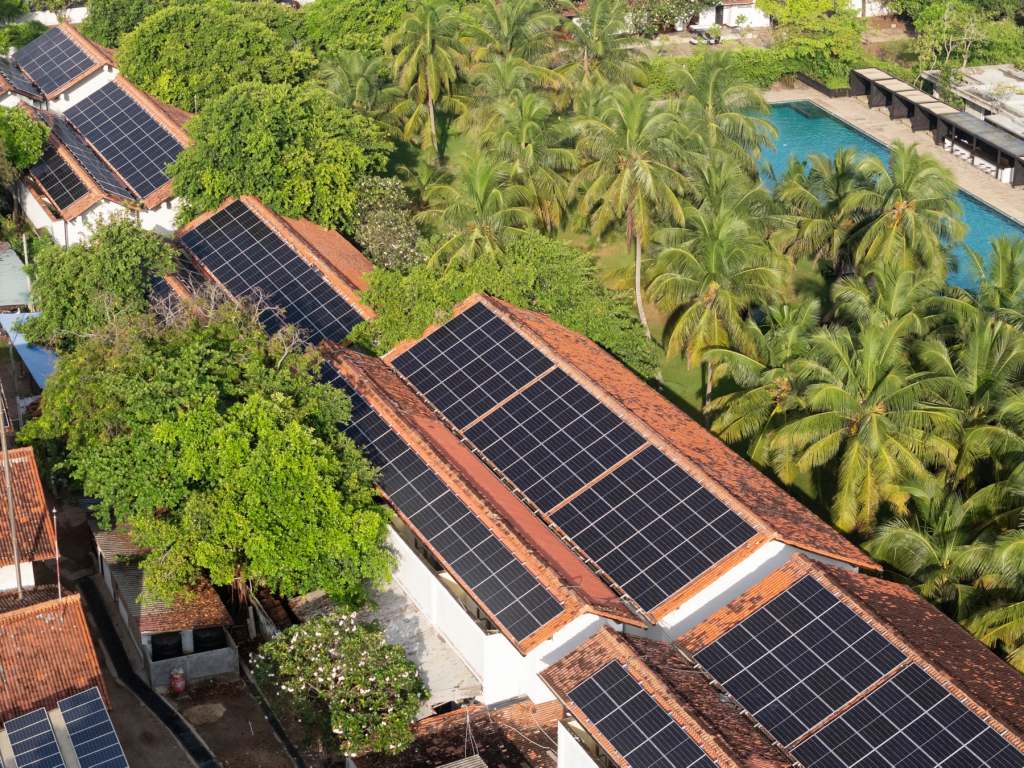
On arrival in Sri Lanka, my first stop was Jetwing Lagoon Wellness reserve in the picturesque fishing town of Negombo, on the west coast. Situated between a lagoon and the Indian Ocean, the esteemed hotel was designed in 1965 and is Sri Lanka’s and Bawa’s first resort design, with terraces of single-storey rooms that are simple but luxurious blending with the palm trees and fauna. Jetwing purchased the reserve in 2011, three years after Herbert Cooray’s death, changed its name from The Blue Lagoon, and added a grid-tied solar energy system and extensive wellness programmes. It also boasts a pool that is so long, at 100 metres, it feels like a road.
Not far away in Ethukala, Mr Cooray opened his first hotel, Blue Oceanic. He took a gamble on a plot of land adjoining Negombo and the six-bedroom holding opened in 1973 (prematurely, due to high demand) using family cutlery and their electric cooker. By 1974, the planned 60 rooms were up and running and Swedish charter operator, Vingresor, who knew Mr Cooray and had encouraged him to build a hotel, were filling it with Scandinavian tourists as promised. The rest, as they say…
Jetwing Vil Uyana
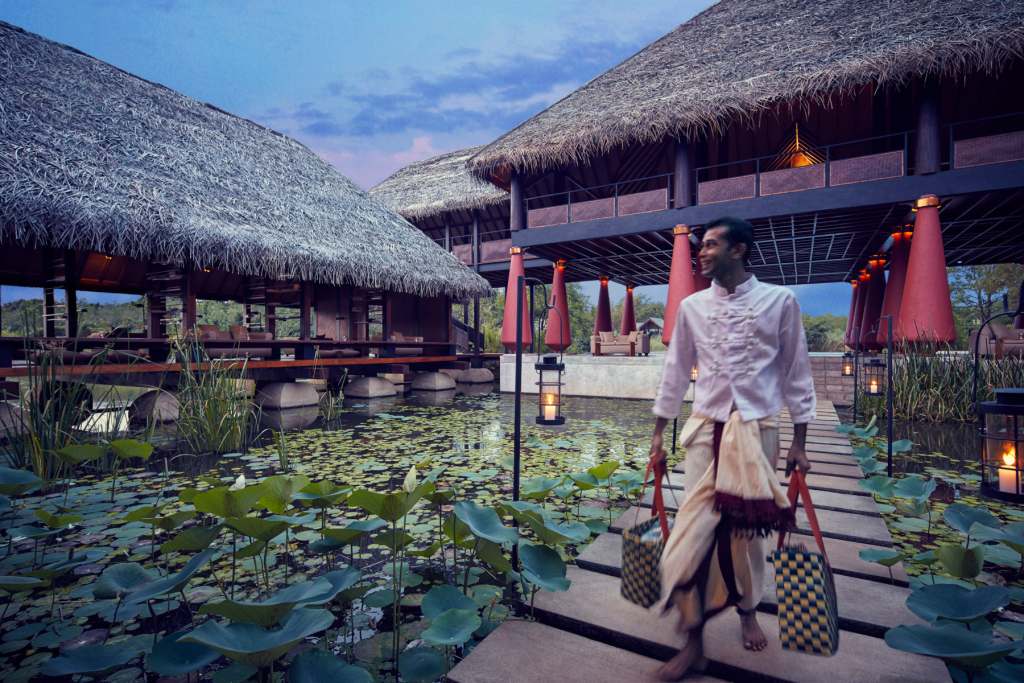
One of the finest Herbert Cooray innovations is Jetwing Vil Uyana, about four miles from the ancient and mysterious Sigiriya rock fortress, considered the eighth wonder of the world, and which is a must for new and moderately fit visitors to the island. At Vil Uyana, sustainability and high-design really sing, and it is regarded as one of the finest eco-hotels on the planet. Surrounded by rice fields and scrub jungle, 30 luxurious villas appear to float on a vast water garden.
The impossibly cute and elusive slender gray loris can be seen at the nearby conservation centre and the fishing cat, which barks like a dog and is about twice the size of a domestic cat, thrives in this environment. My extraordinary abode had its own plunge pool just beneath the front door, and I enjoyed a tropical soaking in it during a warm midnight downpour.
Jetwing Jaffna
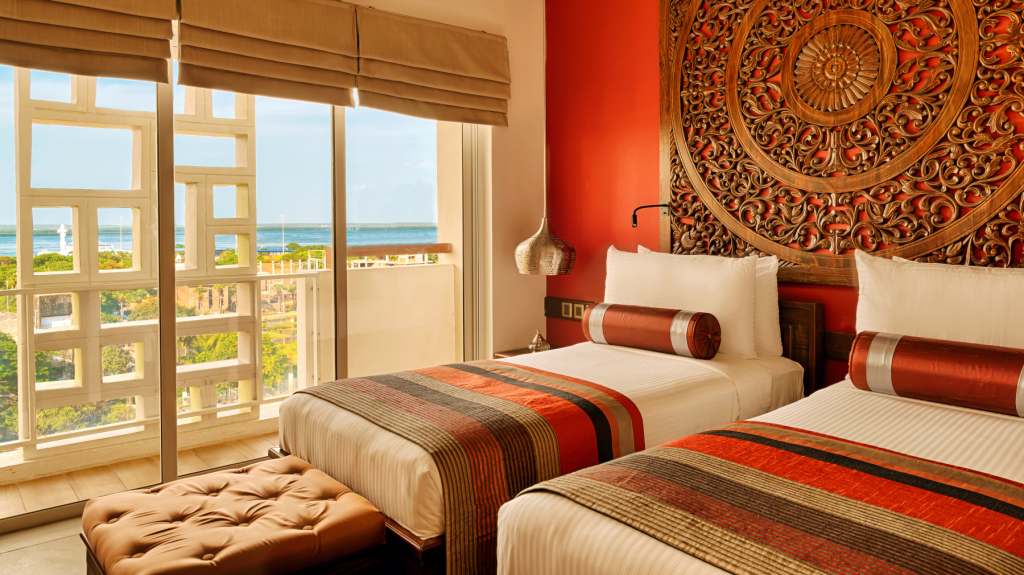
At the end of my trip, a brief stay in Jetwing Jaffna, a solid city high-rise with a great rooftop bar, was preceded by an evening stroll around Jaffna itself, which is the capital of the country’s Northern Province and as a Tamil Tiger stronghold during the civil war, a no-go area for tourists until the war’s end in 2010. The city is still a little broken, with many smashed buildings and water-logged roads but the place was very busy and crackling with life.
Seemingly the only tourist in sight and with a dangling camera vivid against my white t-shirt, I must’ve looked the proverbial sore thumb to put it mildly, but no one paid me the slightest mind. I could’ve been invisible and this I thought was wonderful. Because when I asked someone if they would pose for a picture – something Sri Lankans seem to delight in – a smile would break out, along with enquiries as to who I was and where I lived, but in that measured, self-possessed way, that is never to little or too much, I had come to rely on and admire so much.
Then, picture taken and goodbyes exchanged, it was back to invisibility.